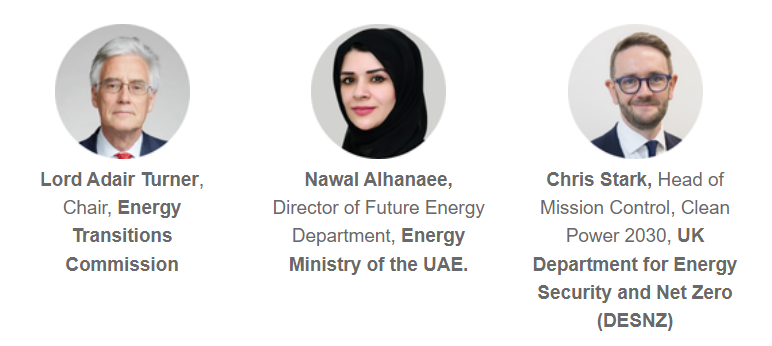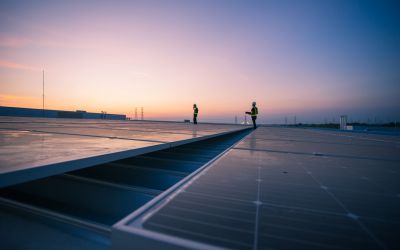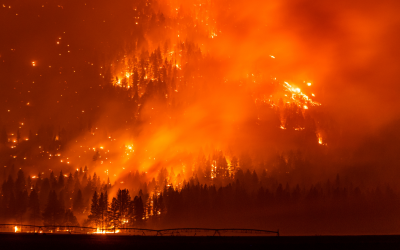What to expect at COP29 - One year on from the UAE Consensus
At COP29, global leaders and stakeholders will assess the progress made since COP28 in the expansion of clean energy. The World Energy Outlook 2024, published today by the IEA, shows clean energy is entering the energy system at an unprecedented rate, yet today’s policy settings still put the world on course for a rise of 2.4 °C in global average temperatures by 2100.
_1000_563_80.jpg)
As COP29 quickly approaches, it is certain that energy, in one form or another, will be on the agenda. Energy is the largest contributor to greenhouse gas emissions and is at the heart of any solution to tackle climate change, particularly in unlocking the decarbonisation of buildings, transport and industry. The UAE Consensus, a historic text agreed on 13th December 2023, had major implications on the future of energy. Amongst numerous commitments, the Consensus calls on 198 Parties to transition away from all fossil fuels and sets a target to triple renewable generation capacity by 2030.
Building on this and moving towards implementation, COP29 will provide a space for stakeholders to gather and make collective progress. The COP29 Presidency's planned initiatives and outcome plans include: Green Energy Zones and Corridors, including targets to promote investment, stimulate economic growth, develop, modernise and expand infrastructure, and foster regional cooperation; Energy Storage and Grids, aiming to increase global energy storage capacity six times above 2022 levels and enhance energy grids through scaling up investment; and Hydrogen Action, unlocking the potential of a global market for clean hydrogen and its derivatives with guiding principles and priorities.
At the Climate Action Innovation Zone, taking place 13-15 November, the Sustainable Innovation Forum and the Hydrogen Transition Summit will host a variety of panels, dialogues and interviews with pioneering individuals, organisations and innovators focusing on a just clean energy transition. Speakers will include Damilola Ogunbiyi, Managing Director, Sustainable Energy for All; Chris Stark, Head of Mission Control, Clean Power 2030, UK Department for Energy Security and Net Zero (DESNZ); Lord Adair Turner, Chair, Energy Transition Commission; and Nawal Alhanaee, Director of Future Energy Department, Energy Ministry of the UAE.

Ahead of the vital climate talks, today (16 October) the International Energy Agency (IEA) published its World Energy Outlook 2024 (WEO), providing a picture of a changing global energy market. The latest edition examines how shifting market trends, evolving geopolitical uncertainties, emerging technologies, advancing clean energy transitions and growing climate change impacts are all changing what it means to have secure energy systems. In particular, the new report underscores that today’s geopolitical tensions and fragmentation are creating major risks both for energy security and for global action on reducing greenhouse gas emissions.
Concerning clean energy technologies, the report’s projections based on today’s policy settings indicate that in the second half of this decade, there will be an excess of manufacturing capacity for key technologies, particularly solar PV and batteries.
Further, based on today’s policy settings, the report finds that low-emissions sources are set to generate more than half of the world’s electricity before 2030 – and demand for all three fossil fuels – coal, oil and gas – is still projected to peak by the end of the decade. Moreover, clean energy is entering the energy system at an unprecedented rate, but deployment is far from uniform across technologies and markets.
IEA Executive Director Fatih Birol said “In previous World Energy Outlooks, the IEA made it clear that the future of the global energy system is electric – and now it is visible to everyone. In energy history, we’ve witnessed the Age of Coal and the Age of Oil – and we’re now moving at speed into the Age of Electricity, which will define the global energy system going forward and increasingly be based on clean sources of electricity.”
The International Renewable Energy Agency ’s (IRENA) Renewable Power Generation Costs in 2023, published at the Global Renewables Summit in September, found that 81% of renewable additions in 2023 were cheaper than fossil fuel alternatives. The evidence is clear, tripling renewable power generation by 2030 is possible, and will provide economic benefits. However, the right enabling conditions must be in place. The IEA report published on the same day, From Taking Stock to Taking Action: How to implement the COP28 energy goals, makes it very clear that if investments in grid and storage lag behind expansion of capacity, coal generation and curtailment will increase. Therefore, a comprehensive and holistic approach is needed to wholly implement the COP28 goals.
The WEO reiterates this message, for clean energy to continue growing at pace, much greater investment in new energy systems, especially in electricity grids and energy storage, are necessary. It finds that for every dollar spent on renewable power, 60 cents are spent on grids and storage, highlighting how essential supporting infrastructure is not keeping pace with clean energy transitions.
Further, the WEO emphasises that despite growing momentum behind clean energy transitions, the world is still a long way from a trajectory aligned with its net zero goals. Decisions by governments, investors and consumers too often entrench the flaws in today’s energy system, rather than pushing it towards a cleaner and safer path, the report finds. The Sustainable Innovation Forum will explore how the evolving global political landscape presents both challenges and opportunities for sustainable development, examine public-private partnerships that are driving rapid deployment of cutting-edge clean energy, and showcase global success stories on designing and implementing long-term clean energy programmes that unlock investments at scale.
Finally, the WEO shows hydrogen will play a key role in total final energy consumption across end-use sectors in the long term, especially in hard-to-abate sectors where electrification faces challenges. However, global hydrogen production remains largely reliant on unabated fossil fuels. The Climate Action Innovation Zone’s Hydrogen Transition Summit will unite stakeholders from across the hydrogen supply chain to accelerate the partnerships, policy and finance needed to accelerate the development of a global low-emission hydrogen economy through improving scalability and affordability.
A new energy system based on renewable and low-emission technologies is possible. However, it will require global cooperation, significant investment, and decisive action to ensure a sustainable and secure energy future.
To find out more information and to register for the Sustainable Innovation Forum and Hydrogen Transition Summit at the Climate Action Innovation Zone, please visit https://events.climateaction.org/innovation-zone/.
To track the wider energy objectives set at COP28, the latest IEA data, analysis and policy advice on global action can be found here.






